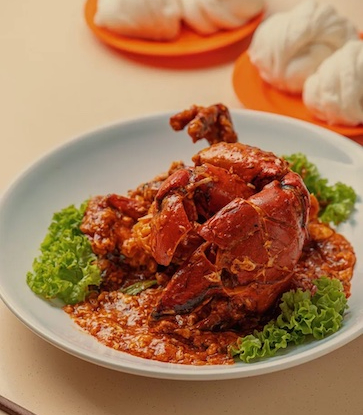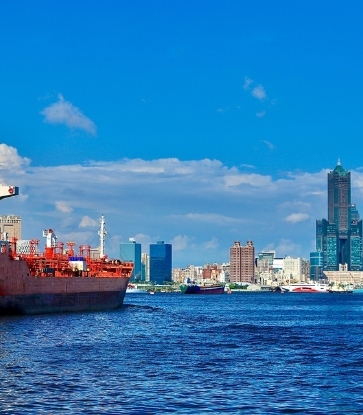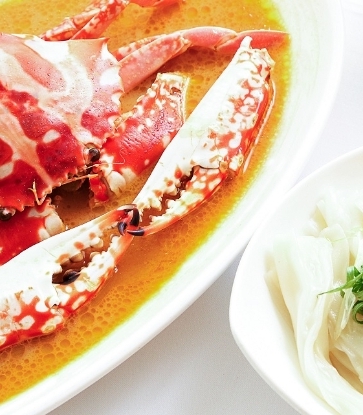Snow crab, or zuwaigani, is the most dominant crab variety in Japan, and how it is called varies according to location. In Tottori—and the San’In region it belongs to—male snow crab is known as matsuba, while the egg-bearing female crab is named oyagani. Beni-zuwaigani is another local favorite, nicknamed “the taste of autumn." But when it comes to the most sought after, itsukiboshi, the rarest, most superior type of matsuba, is simply unrivaled.

Characterized by the tall shell and flat legs, beni-zuwaigani is the most common variety of crab found in Tottori. The designated fishing period starts on September 1 and ends on June 30 the year after. This crab lives in the deep sea, and its meat doesn’t preserve well over time once ashore. Therefore, it is often used to produce processed foods. If you want to taste fresh beni-zuwaigani, a trip to Sakaiminato is a must. The city in Tottori has a local speciality called beni-zuwaigani crab rice, in which the crustacean’s sweetness and umami are accentuated after steamed en papillote with vinegary rice and other ingredients.

The Treasure of Winter
If beni-zuwaigani announces the arrival of autumn, the matsuba crab fully epitomizes winter’s intensity. Not only is it obtained when the Sea of Japan is at its fiercest, its meat is bursting with natural sweetness. Most diners take their time savoring every bite, letting the flavors penetrate their mouth. The peak season of matsuba lasts only from early November to early March, which further contributes to its value. Shunichi Suzuki, Director of Tourism and Exchange Bureau, Tottori Prefectural Government, described with enthusiasm how the Tottori locals enjoy the much-prized crab.
“The meat of Matsuba crab is plump and very sweet. Sashimi is the best way to preserve its original qualities. Another simple way of preparation is nabe (or, hotpot). The combination of crab and vegetables in hot broth keeps our body warm. For the smaller oyagani, it can be added in whole into miso broth, or paired with rice wine.”

Itsukiboshi is a brand developed in recent years marking the very best of the best. A very select few matsuba crabs meet all five of the criteria below to be labeled an itsukiboshi:
1. The shell measures at least 13.5 centimeters in length.
2. The crab weighs at least 1.2 kilograms.
3. The legs are intact and spread out beautifully.
4. The crab shows a bright color with a glossy surface.
5. The meat is firm and plump.
Among all the crabs in Tottori, only about 1.5% satisfies such high standards. So rare is itsukiboshi that there’s no stopping of its surge in value. Each crab cost 700,000 yen in 2016; the newest record is 1.3 million yen.
Even if you can afford the cost, it’s far from certain that you can secure an itsukiboshi on your dining table, as Suzuki explained. “No restaurant can say for certain there’s itsukiboshi on the menu. Whether or not the crab is caught is in question, let alone if a specific restaurant can buy it.”

Here are some of Suzuki's recommendations for a matsuba feast:
Kani-yoshi
The restaurant offers three set menus with prices starting from 25,000 yen. “The chefs there are fantastic. The crabs they choose are surely the best in quality and the freshest,” adds Suzuki.
271 Suehiro Onsen Cho, Tottori City, Tottori Prefecture (5 minutes by foot from JR Tottori Station)
Opening Hours: 5:00 p.m. - 10:00 p.m. (Closed days varies)
Yamadaya
A guesthouse with more than 200 years of history, Yamadaya is renowned for a complete holiday experience beginning with a hot spring in front of sweeping views of the sea. It is followed by an impeccable crab feast with crab sukiyaki being the star of the show. The broth, made with a secret recipe, takes the crustacean several levels up the umami scale alongside homemade ponzu. The dinner can be booked separately for those who prefer to not stay overnight.
5-5-36, 1 Chrome, Karocho Kita, Tottori City, Tottori Prefecture (15 minutes by Taxi from JR Tottori station)
Opening Hours: 4:00 p.m. - 10:00 p.m.
Wakabayashi
This venture started off as a seafood dealer in the first year of the Meiji period (1868). It takes the current shape as a restaurant when the Heisei Period (1989) began. Located next to the harbor of Tottori, guests can crack the crabs open while taking in idyllic views of a fishing village. “The prices there are very reasonable," says Suzuki. "An all-encompassing meal with crab costs only around 10,000 yen.” If dining in isn’t enough to satisfy your crustacean cravings, Wakabayashi’s retail shop also sells fresh or cooked matsuba and beni-zuwaigani crabs.
1-8-12 Karocho Kita, Tottori City, Tottori Prefecture
Opening Hours: 11:00 a.m. - 2:00 p.m.; 5:00 p.m. - 9:00 p.m. (Sundays and public holidays: 11:00 a.m. - 9:00 p.m.)




















